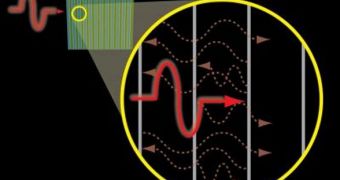A collaboration of researchers has recently made it possible to accelerate the speed of the basic light particle – the photon – to seemingly faster-than-light speeds. This effect has been achieved by passing the photons through stacked materials, in which the scientists added a single, thin layer at a strategic location. This seems to confirm a number of quantum-physics hypotheses, which state that the time light takes to transit certain materials, including glass, is not determined by the thickness of that medium, but by the order in which the layers that form the medium are stacked, PhysOrg reports.
The work was conducted by a team of experts from the Joint Quantum Institute (JQI). This is a collaboration that was set up between research groups at the University of Maryland and the US National Institute of Standards and Technology (NIST). For the first time ever, these people have compiled convincing experimental pieces of evidence to support these ideas, and have done so with single photons too. For the study, researchers used dielectric materials, which are insulating, and are regularly employed to form reflective coatings on surfaces such as mirrors.
The setup the team created featured about 30 layers of dielectric materials, each of them with a thickness of about 80 nanometers. The layers were not all the same. Alternately, high- (H) and low- (L) refractive index materials were used. This meant that the photons slamming into them had a higher or a lower chance of passing through to the other side. This type of setup gives birth to many reflections inside the stack of layers, as photons that make it through several L and H layers eventually stop in an H layer, and are reflected back. The team measured that a photon passing though their device took 12.84 femtoseconds to do so. That is, a 12.84 quadrillionth of a second.
By adding an L layer at the end of the stack, a photon's transit time was boosted by up to 3.52 femtoseconds, to about 16.36 femtoseconds. If the light particle were to pass through the last layer alone, it would have done so in only 0.58 femtoseconds. It was also discovered that adding an H layer decreased the time the photon took to break through to about 5.34 femtoseconds. This basically means that the photon exited the stacked layers – which were 2.6 microns thick – at superluminal speeds. This is made possible by the fact that light can act like both a wave and a particle, and also by the fact that only a select few of the photons going into the system make it out through the other end.

 14 DAY TRIAL //
14 DAY TRIAL //